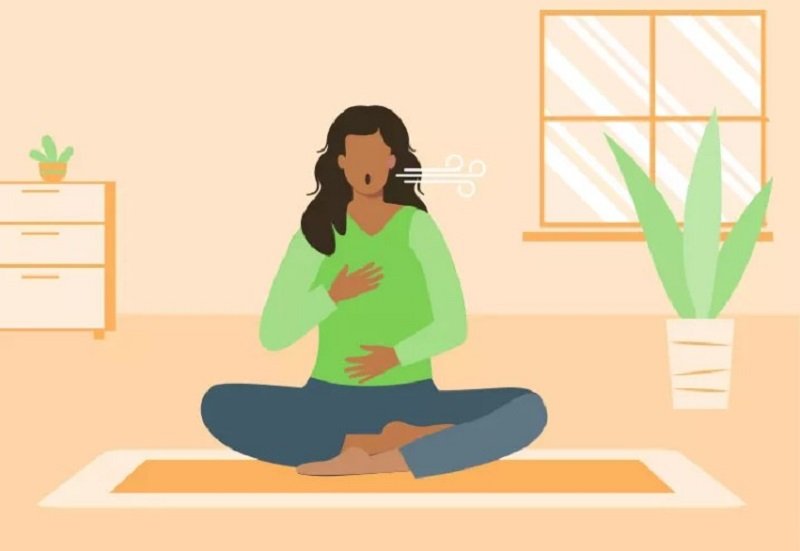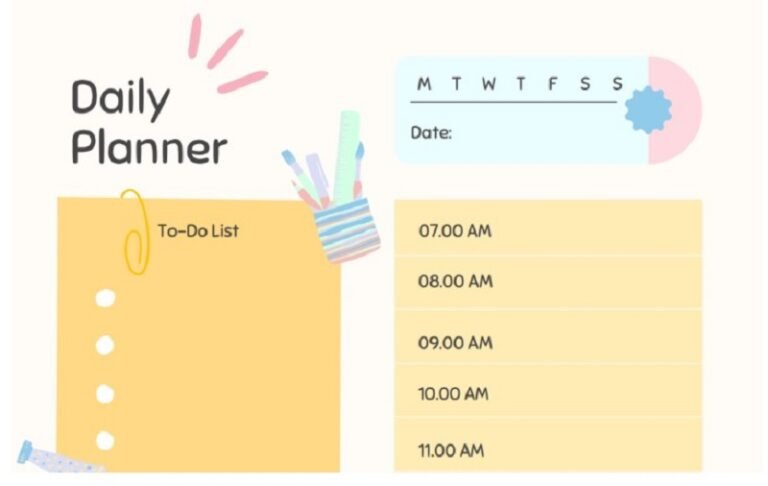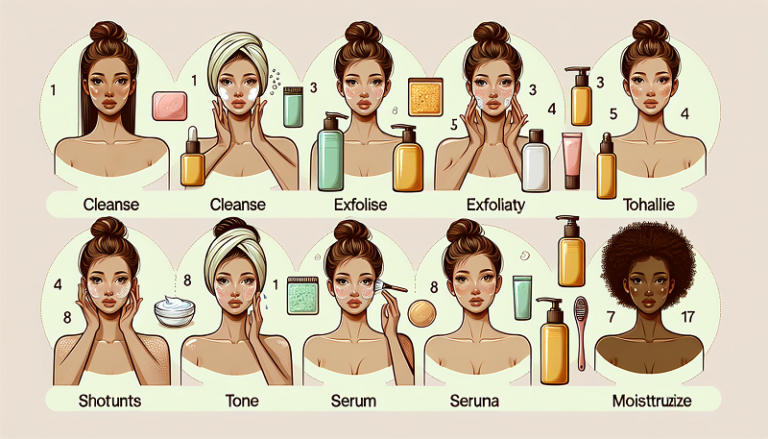Practical Relaxation Exercises for Stress

Understanding Stress Management
Getting a handle on stress management is like your secret weapon for keeping your mind and body in check. Let’s dive into why keeping stress at bay can make you feel like a million bucks.
Importance of Stress Reduction
Cutting down on stress is like giving your whole self a boost. Hanging onto stress for too long can mess with your health big time. We’re talking sky-high blood pressure, mental funk, and brain fog. Sneaking in some relaxation exercises for stress can turn the tide and pump up your life quality. Think mindfulness, yoga, and daydreaming your stress away. These tricks help tackle life’s little stresses without breaking a sweat.
Making these stress-busting tactics part of your daily groove can sharpen your mind, balance your mood, and toughen up your physical health. They’re a breeze to work into the daily grind of juggling work drama and personal errands. Dive deeper into our piece on stress reduction techniques for all the lowdown.
| Health Headaches Caused by Chronic Stress | Examples |
|---|---|
| Physical Health | Blood pressure bumps, heart troubles |
| Mental Health | Anxiety, depression, brain blips |
| Brain Kilowatt | Memory slip-ups, focus flunks |
Impact of Stress on Mental Health
Stress is like a heavyweight champ when it comes to messing with your mental health. Lingering stress throws your mind through the wringer leading to anxiety, depression, and just plain burnout. Those pesky chemicals from stress mess with your brain’s mojo, leading to memory slip-ups, attention woes, and all-around lousy choices.
Spotting and dealing with these stress-induced headaches early is a biggie. Picking up stress management techniques keeps your mental game strong. Tricks like talking yourself into chill mode, muscle mellowing, and visualizing a calm place work wonders. If you’re hustling as a young professional, you’ve really gotta have some go-to moves for coping with stress.
Putting mental health up top and using slick stress-busting hacks can reinforce your mental grit and step up your life game. For a deeper dive into stress-busting methods and their perks, wander over to our stress management activities section.
An Overview of Relaxation Techniques
Breath Focus
Breath focus, sometimes called deep or belly breathing, is probably one of the easiest ways to chill out when you’re feeling stressed. The technique involves slow, deep breaths that really use your diaphragm, helping you to relax. Dr. Herbert Benson at Harvard came up with this technique back in the ’70s as part of his focus on the relaxation response (Harvard Health Publishing).
| Step | What To Do |
|---|---|
| 1 | Plop down either sitting or lying comfortably. |
| 2 | Shut your eyes and breathe in deeply through your nose, counting to four. |
| 3 | Hold that breath while counting to four. |
| 4 | Breathe out slowly through your mouth for four counts. |
| 5 | Keep repeating this for a few minutes. |
Body Scan
With body scan meditation, you lie down cozy-like, and focus your mind from your toes to the top of your head. It’s an awesome way to become more aware of your body and can ease up muscle tension (Mayo Clinic).
| Step | What To Do |
|---|---|
| 1 | Find a quiet place to spread out. |
| 2 | Close your eyes and take a bunch of deep breaths. |
| 3 | Focus on your toes, just noticing what’s goin’ on there. |
| 4 | Slowly bring that focus up your legs, torso, arms, and face. |
| 5 | Notice any tense spots and intentionally relax them. |
Guided Imagery
Guided imagery is all about imagining peaceful scenes to give stress a timeout. You picture calming views or experiences and try to really feel like you’re there. It can really drop those anxiety levels (NCBI).
| Step | What To Do |
|---|---|
| 1 | Get comfortable, either sitting or lying down. |
| 2 | Shut your eyes and breathe deeply a few times. |
| 3 | Picture a peaceful spot, like a quiet beach or a calm forest. |
| 4 | Engage all your senses, imagining sounds, smells, and textures. |
| 5 | Spend several minutes just soaking it in. |
Mindfulness Meditation
Mindfulness meditation centers around staying in the moment without judging what you feel or think. This practice helps build awareness and makes stress a little less overwhelming.
| Step | What To Do |
|---|---|
| 1 | Sit comfy with your back straight. |
| 2 | Close your eyes and zero in on your breathing. |
| 3 | Focus on the feel of each breath as it comes in and goes out. |
| 4 | If your mind wanders, gently pull that focus back on your breath. |
| 5 | Keep this up for 5-10 minutes. |
Yoga, Tai Chi, Qigong
Yoga, Tai Chi, and Qigong harness ancient methods blending movement, breath, and meditation, offering a whole body stress-busting experience. They improve mental well-being while giving a shot of physical health too (Harvard Health Publishing).
| Practice | Focus | Benefits |
|---|---|---|
| Yoga | Get bendy with poses and breathing | Boosts flexibility, strength, and calmness |
| Tai Chi | Smooth, slow movements | Enhances balance, reduces stress, aids concentration |
| Qigong | Mixes controlled breathing with gentle moves | Supports energy flow, relaxation, and a clear mind |
Repetitive Prayer
Repetitive prayer is about silently repeating a short prayer or phrase, tying it in with your breath rhythm. It’s great for anyone who finds peace in spiritual practices.
| Step | What To Do |
|---|---|
| 1 | Sit in a comfy, quiet spot. |
| 2 | Close your eyes and take a few deep breaths. |
| 3 | Silently repeat a short prayer or phrase. |
| 4 | Match the rhythm of your phrase with your breath. |
| 5 | Continue for several minutes. |
Making these stress-busting relaxation techniques part of your routine can really help lift your mental health. For more on stress-taming tips, check out our piece on coping strategies for stress.
Benefits of Regular Practice
Recommended Practice Duration
Young pros juggling hectic schedules? Time to chill with some relaxation exercises. Here’s the scoop: Dr. Herbert Benson at Harvard says regular relaxation is your buddy in dialing down stress. The magic trick? Make space for it daily—like squeezing in 10-20 minutes for mindfulness, guided daydreams, or a muscle tune-up session. No sweat if crunched for time; just grab a quick deep-breath break or dabble in some yoga.
| Practice | Recommended Duration |
|---|---|
| Breath Focus | 5-10 minutes |
| Body Scan | 20-30 minutes |
| Guided Imagery | 10-20 minutes |
| Mindfulness Meditation | 10-20 minutes |
| Yoga, Tai Chi, Qigong | 20-45 minutes |
| Repetitive Prayer | 10-20 minutes |
Long-Term Health Benefits
Giving relaxation techniques a regular go helps squash stress’s nasty effects on your body. The Mayo Clinic’s got your back, saying these habits are great for tackling those little stress spikes and the nagging, long-haul stress monsters like heart disease and aches. Keep at it, and you might just lower your cortisol, giving stress the boot!
Well-Being and Stress Reduction
Slide some chill exercises into your day-to-day groove and watch the magic happen. Cool tricks like box breathing, guided daydreaming, and muscle relaxing are ace at dropping cortisol, boosting your brainpower, and chilling your bod. (NCBI Bookshelf). They’re stress-busting activities you shouldn’t miss.
Beyond just easing the stress, these moves smooth your mood and help you stay cool under pressure. Making them part of your routine boosts your resilience and mental health, readying you for life’s stress bombs. Need some tips on these techniques? Check out our stress-busting strategies.
Exploring Various Techniques
Finding what works best for managing stress involves dabblin’ in a few different relaxation tricks. Let’s look into three main methods: autogenic relaxation, progressive muscle relaxation, and visualization, with a sprinkle of other handy ideas.
Autogenic Relaxation
Autogenic relaxation is all about using your mind to chill out your body. It’s like a spa day inside your head! By repeating calming thoughts or words, it helps ease muscle strain and smooth out stress wrinkles (Mayo Clinic).
| Steps for Autogenic Relaxation |
|---|
| Find a Quiet Place: Get comfy in a peaceful corner. |
| Close Your Eyes: Sit or lay down and shut those peepers. |
| Repeat Phrases: Whisper sweet nothings like “My arms feel heavy and warm” or “My heartbeat is easy-breezy”. |
| Focus on Visualization: Picture peaceful scenes to level up the mellow. |
Progressive Muscle Relaxation
Progressive muscle relaxation is all about making muscle tension tap out. It’s a simple squeeze-and-release routine that tunes you in to how your body feels (Mayo Clinic).
| Steps for Progressive Muscle Relaxation |
|---|
| Get Comfortable: Park yourself in a comfy spot. |
| Focus on Muscle Groups: Start with your toes and work upwards. |
| Tense Muscles: Tighten each muscle group for around 5 seconds. |
| Relax Muscles: Let go of the tension for a blissful 30 seconds. |
| Notice the Difference: Savor the switch from tense to loose. |
Visualization
Visualization is like a mental mini-vacation. It’s about mentally traveling to your happy place, using all your senses to boost relaxation (Mayo Clinic).
| Steps for Visualization |
|---|
| Choose a Setting: Picture a serene spot like a sandy beach or whispering woods. |
| Engage Senses: Mix in scents, sights, sounds, and textures. Smell the ocean breeze, hear the waves swish, feel the warm grains of sand. |
| Create Vivid Images: Make the images bright and colorful for full effect. |
| Incorporate Deep Breathing: Add some slow breathing to turn up the chill. |
Other Relaxation Methods
There are heaps of other chill-out tricks to manage stress, like:
- Deep Breathing: Fill your lungs deeply to soothe body and soul.
- Meditation: Mindfulness sessions to keep your thoughts in check.
- Tai Chi and Qigong: Graceful moves paired with mindful breathing.
- Yoga: Mixes postures, breaths, and meditation for total calm.
These methods, big on focus and awareness, work well in any setting. Stick with it, and you’ll get the hang of stress-busting. For details and how to mix these into your life, check out our pages on stress management techniques and stress reduction techniques.
Practical Tips for Implementing
Increasing Awareness of Stress Symptoms
Spotting stress signs early is like catching a spill before it turns into a flood. Stress likes to sneak up with sneaky physical, emotional, and behavioral changes. Once you get the hang of recognizing these changes, you can jump into action with relaxation exercises before stress gets a strong grip on you.
Common Stress Symptoms:
- Physical: Racing heartbeat, headaches, tight muscles, panting for air
- Emotional: Grumpiness, worry, the blues
- Behavioral: Can’t focus, eating or sleeping goes wacky
A stress journal can be your buddy in tracking these symptoms. Note down patterns and triggers to jump on stress management techniques just in time.
Effective Responses to Prevent Escalation
So, you’re tuned into your stress signals, now what? Time to roll up your sleeves and get to work with effective responses. Regularly practicing relaxation techniques can make you a stress-fighting ninja, spotting and reacting to muscle tension or other signs just before stress gets the upper hand. Here’s how you can kick stress to the curb:
- Breath Focus: Fancy word for take a chill pill with your breath. Breathe in deep through your nose, let it go slow through your mouth. Works like a charm to bring you down a notch (NCBI Bookshelf).
- Body Scan: From toes to head, pay each part a visit. Tense up, then let go. Bye-bye, physical stress.
- Guided Imagery: Dream up a peaceful scenery. Got an app or online resource? Even better. Let your mind take a mini-break from the stress show.
- Mindfulness Meditation: Just sit down and soak in the present. This one’s the real deal for kicking stress and anxiety to the curb (NCBI Bookshelf).
Work these techniques into your day like they’re second nature. For more tricks to ditching stress, peep at our guide on stress management techniques.
Recommended Practice Duration:
| Technique | Duration (Minutes) |
|---|---|
| Breath Focus | 5-10 |
| Body Scan | 10-15 |
| Guided Imagery | 10-20 |
| Mindfulness Meditation | 10-20 |
Spending a few minutes every day on these relaxation exercises can send stress packing. For more ways to tackle stress, check out our articles on coping strategies for stress. Got your back with practical stress-busting tips!
Precautions and Considerations
Hey there, before you jump headfirst into that world of chillin’ vibes and stress-bustin’ exercises, let’s talk about a few things to keep your noggin in the right space.
Emotional Discomfort Awareness
You ever try to relax and end up feeling like you’ve opened Pandora’s box of feelings? Yeah, sometimes these chill sessions can bring out emotions you didn’t even know were hanging around. While shutting off the brain and letting loose, folks might bump into unexpected uneasiness about stuff that’s been quietly simmering in their subconscious.
With exercises like mindfulness meditation or body scans, brace yourself for a possible emotional rollercoaster—from blues to jittery feels. Just note these waves without beating yourself up over them. If your session gets too rocky, hit pause, do some deep breathing or focus on what’s around you—like the way your feet feel on the floor or the sound of a bird chirping outside.
Seeking Professional Guidance
If you’re feeling more frayed than fabulous after trying to unwind, talking to a pro might be the way to go. Therapists can not only help you chill in a way that fits your vibe but also make sure you’re chilling safely and effectively.
For those with past trauma or major anxiety hang-ups, getting some expert advice may ensure that relaxation rituals don’t backfire. A mental health professional can help make sense of all this and guide you toward relaxation practices that work for you. Need more info or support? Check out more de-stress tricks on our coping strategies page.
Relaxation techniques are the good vibes your mind needs. Just remember: your brain’s feelings are valid, and if any exercise is making you feel more stressed, it’s okay to seek a bit of expert advice. Keep the vibes positive and your well-being in check!
Physical Activity for Stress Relief
Sweating it out is an awesome way to ditch those stress vibes! For young pros who feel like they’re juggling flaming swords, getting sweaty regularly could be just the trick.
Exercise as a Stress Reliever
Exercise—any kind, really—serves as a trusty stress-busting buddy. Why? Getting your heart pumping unleashes endorphins, your body’s very own happy juice, to zap those anxious thoughts away. It doesn’t matter if you’re strolling around the block, hitting the gym, or sprinting like there’s a sale on sneakers, adding a splash of movement to your day can work wonders for your noggin.
Perks of Getting Active for Stress Bustin’:
- Pumps up those endorphin levels
- Puts you in a better mood, boosts energy too
- Helps you catch those Zzzs
- Gives you a break from that never-ending to-do list
Department of Health and Human Services Recommendations
The Department of Health and Human Services gives the lowdown on how much you should be moving to keep stress at bay and stay fit. For most folks, here’s the scoop on exercise timing (Mayo Clinic):
| Type of Activity | Time Per Week |
|---|---|
| Moderate Aerobic Exercise | 150 minutes |
| Full-on Intense Aerobic Exercise | 75 minutes |
| Mix ‘n’ Match of Both | Equivalent blend |
Making these workouts part of your weekly gig can be a huge stress-buster. Curious about other ways to chill out? Take a peek at our pieces on stress management tricks and ways to cope with stress.
Physical activity isn’t just about stress relief; it’s like a superpower for better health and a rock-solid foundation for a more vibrant life.
Choosing the Right Physical Activity
Picking the right kind of physical activity is a big deal for young professionals caught up in the stress of daily life. Getting a good sweat in can do wonders for easing stress and keeping yourself balanced.
Fitness Benefits of Exercise
Exercise is a top-notch stress buster. Seriously, just about any kind of movement does the trick. When you keep physically active, you’re actually helping:
- Light up your brain’s happy signals
- Shift your focus from the rat race
- Brighten your mood and mental state
If you’re generally healthy, the Department of Health and Human Services suggests:
| What to Do | Time Per Week |
|---|---|
| Moderate Aerobic | Get in 150 minutes |
| Vigorous Aerobic | Work it for 75 minutes |
| Mix ‘Em Up | A good combo works fine |
Keeping up with regular exercise is where it’s at for smashing stress and feeling fab. Check out these stress reduction tricks.
Activities for Stress Relief
Picking an activity you dig is what keeps you coming back for more. Whether you’re shaking a leg or lifting weights, the fun factor keeps you going. The Mayo Clinic backs this—almost any kind of exercise can notch up fitness while knocking down stress. Here’s a handful to try:
| Activity | What’s It Like? |
|---|---|
| Walking | Easy peasy, for all walks of life. |
| Jogging | Gives your heart a good workout. |
| Dancing | Double whammy for physical and mental pep. |
| Biking | Great combo of cardio and leg power. |
| Yoga | Stretch and relax, body meets mind. |
| Tai Chi | Smooth moves for a chill vibe. |
| Gardening | Soothing for your body and soul. |
| Weightlifting | Flex those muscles and melt away stress. |
| Swimming | Gentle on joints, strong on heart health. |
Trying out different options lets you find your groove. For more advice on kicking stress, hop over to our stress management activities.
Interval training is the name of the game for busy folks—quick bursts of serious action for 60 to 90 seconds pack a punch. It’s perfect if your calendar’s jammed.
Making exercise part of your day keeps your mind healthy and doubles as a go-to stress coping plan. Choose something you love, and take stress management to the next level while boosting your life’s quality.






